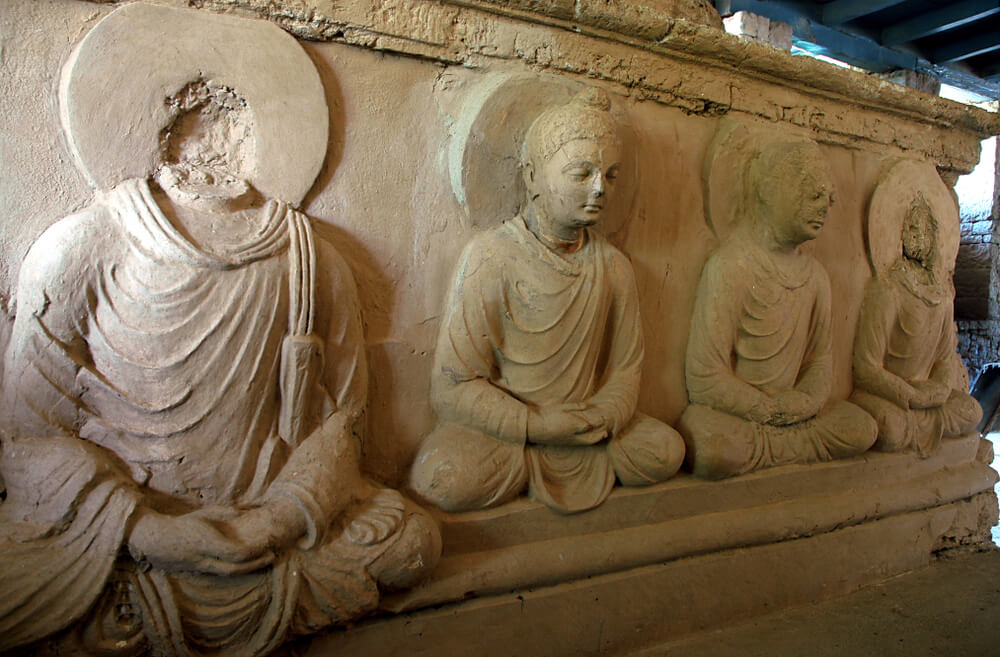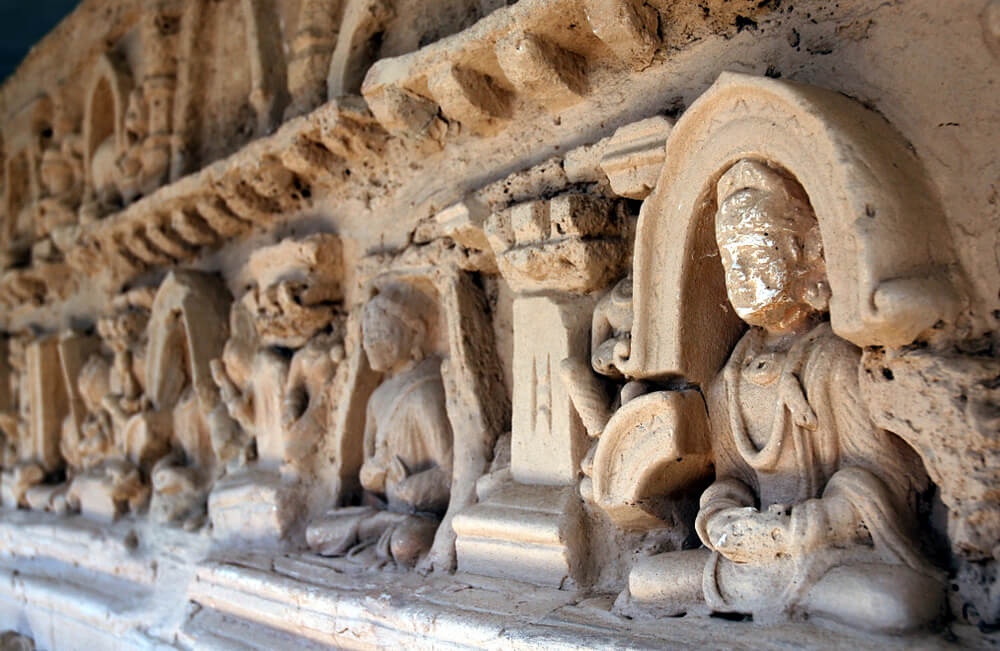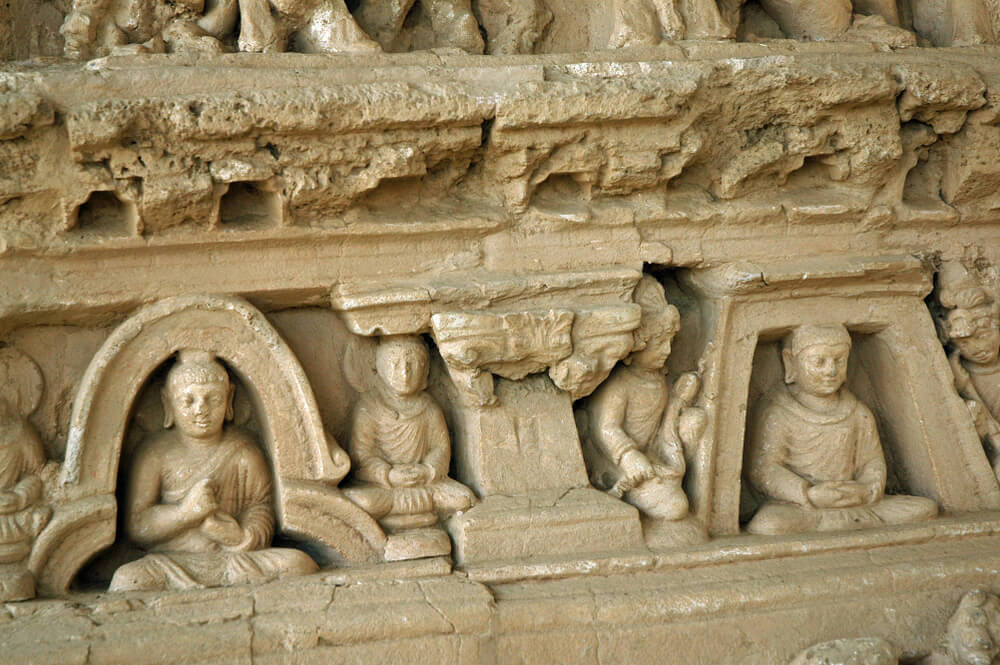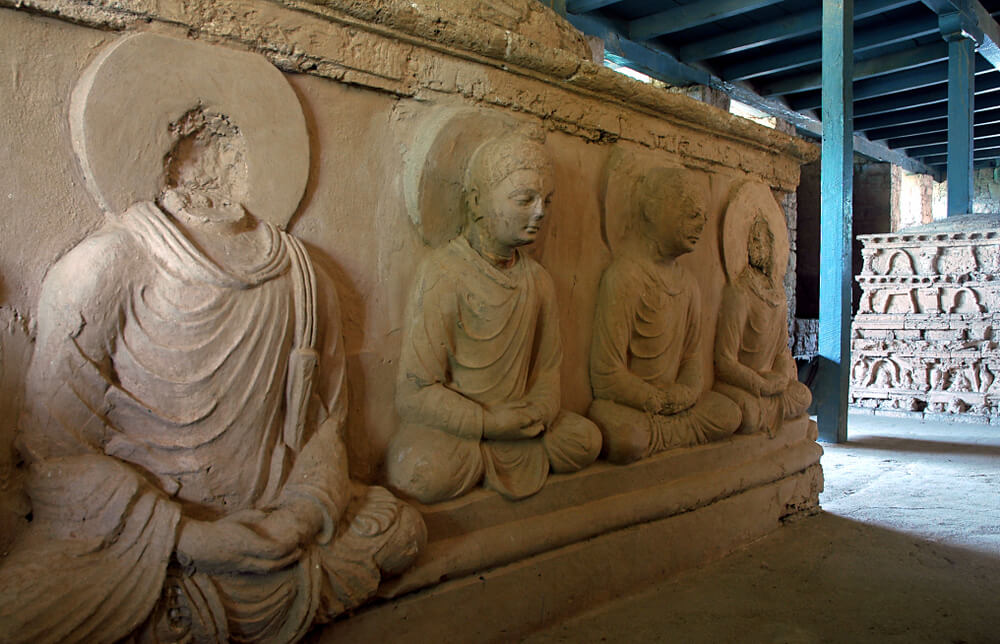Jaulian
More than 3,000 years ago, the main center of the Gandhara kingdom was Gandhara, the birthplace of the great Buddhist Civilization. This city was the location of numerous magnificent Buddhist institutions, the oldest of which, Jaulian, served as a center of learning from the fifth century BC to the fifth century AD. Especially regarding the Buddhist art and architecture of Gandhara, Jaulian was once a thriving ancient city and a major center of learning. Visitors can still find a giant Stupa, a Buddhist shrine, and a Buddhist monastery’s ruins at the Jaulian archaeological complex. In 1980, UNESCO added the Jaulian monastic complex to its list of World Heritage Sites.
In this post, we’ll tell you everything about Jaulian Taxila, the fascinating oldest university in the world!
History of Jaulian
Jaulian Taxila was built in the ancient state of Gandhara when Buddhism first spread outside the Indian subcontinent. Between the first and fourth centuries CE, the Kushan Empire was the dominant power in the area, centering on the confluence of the Kabul and Swat rivers in Pakistan and Afghanistan. The Kushans eventually established themselves as the dominant force, a nomadic people from the Eurasian steppe. They took control of a significant portion of the Silk Road that connected China, India, and the Mediterranean Sea. The White Hun invasion in the 450s CE destroyed Jaulian and the rest of Ancient Taxila, which was later abandoned. Later kings like the Hun King Mihirakula victimized these Buddhist monks, and the site never fully recovered.

Sir Johan Marshal’s excavations revealed the site to be an architectural masterpiece. Dr. Park Kyo Soon, general secretary of the Gandhara Art and Culture Association, claims that hundreds of coins found at this site combined images of Kushan royalty, Buddhist symbols, and Greek lettering. And now, Jaulian Taxila is a famous archeological site with a lot of historical significance.
Architechture of Jaulian Buddhist Stupa
Jaulian’s structure and form are reminiscent of the nearby Mohra Muradu. A stupa, a Buddhist shrine, is a mound-shaped religious building that may house Buddha or Buddhist saint relics, commemorate a holy occasion, or designate a sacred site. Stupas evolved to bring the living Buddha to more people and serve as an outward representation of the faith. The main methods of worshiping the Buddha and demonstrating adherence to the faith included making a pilgrimage to a stupa or giving money to have one built.
The Jaulian Buddhist Stupa complex consists of the main stupa, 27 subsidiary stupas, and two adjacent courts. Around the courts are 59 chapels that depict scenes from the Buddha’s life. The complex consists of several monastic life structures, including a storeroom, a kitchen, an assembly hall, and monk quarters. Gandhara was an excellent location to profit from commercial activity because it had access to the Central Asian corridor of the Silk Road, the seaports along India’s west coast, and land routes to the Persian Empire in the west. By embracing diverse cultures and adopting traits from its subjects influenced by Hellenistic, Persian, and Indian cultures, the Kushan Empire promoted trade. It made it easier for them to do business with their neighbors. The blend of architectural details on the stupas at Jaulian, which incorporate Greek, Persian, and Roman elements within the Buddhist complex, is another example of this cultural fluidity.
Main Stupa
Compared to Mohra Muradu or the Dharmarajika Stupa, the main stupa at Jaulian was much smaller and badly damaged. Like almost all the sculptures and architectural details, stucco plaster extensively covered it. Despite using simple materials to mold, Mohra Muradu’s decoration is considered higher quality than that at Jaulian. A few locations still have their original plaster. Twenty-one smaller “votive stupas” that contained religious iconography surround the main stupa. However, some claim that some votive stupas were constructed as revered monks’ tombs. Although archeologists removed some statues in the votive stupas, which are now on display in museums, most are still in place. The “Healing Buddha” was a statue of Buddha in a votive stupa with a navel hole. To pray for various illnesses to be cured, pilgrims would place their fingers in the icon’s navel. A preserved inscription from the fifth century reveals that a friar gave the statue as a gift.

Monastery
The Jaulian Monastery was a two-story structure with 28 student rooms on the first floor and another 28 on the second, Perched atop a hill. Stone stairs that are still in good condition connect the two levels. There are preserved Buddha statues in a few of the rooms. Each room featured a window that let in the fresh air and provided natural light and a niche for lamps. Buddhists created windows with narrower outer edges and wider inner edges to deter wild animals. Plasterwork, paintings, and other decorations adorned the rooms. The Monastery had a section designated for creating Buddhist inscriptions, generally on birch bark, a highly perishable material. In addition, the Monastery had a kitchen and a sizable pool for washing. Two stone mills used to grind grains and a stone for grinding spices are still well preserved at the site.
When was the Jaulian Buddhist Stupa built?
Jaulian Buddhist Stupa was built in the second century CE, during the spread of Buddhism in the Indian subcontinent. Buddhism moved from the northwest of the Indian subcontinent to Afghanistan’s Hindu Kush Mountains, Central Asia, and China along the trade routes of the Taxila Valley. The building of stupas and monasteries in Gandhara started in earnest after 100 CE under the Emperors Kaniska and Huviska.
What are the attractive features of Jaulian Ruins?
The ancient city of Jaulian is a part of the Taxila archeological site, which also contains the remains of a Gandharan learning hub and thriving ancient city. In Jaulian ruins Taxila, you can see the noteworthy stops, ornately decorated with figures representing the Buddha’s life and philosophy. Here are some chambers for meditation as well. Jaulian’s statue of the Healing Buddha is the most intriguing one. According to legend, you can cure all illnesses by sticking your finger in the torso’s hole. Another fascinating aspect of this Monastery is that it withstands earthquakes, with the walls made of a mixture of big and small stones to absorb the shock.

How to reach Jaulian from Taxila?
Jaulian Taxila is about 7 kilometers away from Taxila via PMO Blvd road. You’ll reach here from Taxila in just 15 minutes. You must visit the Jaulian Buddhist Stupa Site when going to Khanpur Dam.
Why is Jaulian famous for Buddha?
Jaulian Taxila is an archaeological site that holds a special place of reverence for Buddhists—visitors from Thailand and South Korea mainly visit this location. The pilgrims used to pray for three months in the assembly hall and unique rooms for meditation and bathing. Jaulian Taxila contains things that the Buddhist community can only imagine! Here are Buddha’s prayer belly button and ashes. There are also numerous stupas with engravings of Buddha in various positions. A part of Budha’s statue had moved to the Taxila Museum. The past also records the destruction of numerous stupas and Buddha statues by the Mongols.
Preservation of Jaulian Taxila
The CyArk and Lahore University of Management Science (LUMS) collaborated to preserve the Jaulian Monastery digitally. Thanks to a grant from USAID to establish a Technology Center and support the preservation of Pakistan’s architectural heritage. Students from LUMS scanned the Jaulian Monastery’s main stupa and its surroundings in 2014 and sent the data to CyArk for processing and archiving. The resulting documentation offers a precise baseline map to track the deterioration of the site’s artistic creations, including its sculptures, paintings, and inscriptions. This information strengthens the ability to plan future preservation efforts and supplements the existing historical documentation and conservation materials.

Jaulian Timings & Visiting Days
Jaulian Taxila remains open for visitors daily from 9:00 AM to 4:30 PM except for Fridays. However, timings may vary on Buddha’s birthday. Additionally, Jaulian Taxila offers a large amount of free parking. The entrance fee for locals is PKR 50, while foreigners have to pay PKR 500.
Location of Jaulian
In the Khanpur neighborhood of Khyber Pakhtunkhwa, Pakistan, there is a Buddhist monastery called Jaulian. A small road leads to the Jaulian Temple and Monastery from Taxila on the way to the Khanpur Dam. A small, clear water canal from Khanpur Dam flows close to the bottom of the hill near the Monastery atop the small hill. Although the Pakistani government has built stairs, getting there is a strenuous hike. It involves ascending roughly 250 stairs to get to the Monastery.
Conclusion
When you see them, it’s hard to believe that the Jaulian Buddhist stupa and Monastery’s ruins date back to the fifth century BC. The Monastery and its surroundings provide a tranquil setting for reflection and a thorough history study. Government officials are responsible for maintaining it because it is a UNESCO world heritage site. So if you are a history lover, you must visit this serene, beautiful place full of history.
Remember, photography inside the archeological site of Jaulian Taxila is not allowed!
